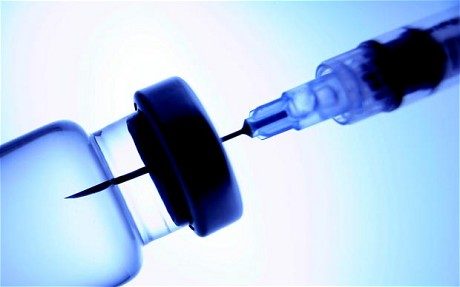
Vaccination is by far one of the greatest success stories of the twentieth century, surpassing the discovery of penicillin and the landing on the moon. Think about it – by giving someone portions of viruses or bacteria, you stimulate the body’s immune system into making chemicals that fight those germs. Brilliant!!
Simply put, vaccination saves lives. Worldwide, it prevents 2 to 3 million deaths every year.
You don’t have to look very hard, to find stories of lives affected by the development of vaccines. Here’s one mother’s story – my story.
Picture an eager young doctor in an inner city medical center in the New York metropolitan area, training to specialize in pediatrics. The training was physically, mentally and emotionally taxing. As a new mother and doctor, it was heart wrenching to watch children die. To be the person breaking the horrible news of a child’s death to a parent, was to be an unwilling participant in a tragedy that changed lives forever.
It was the mid-eighties, and it seemed as though every child from newborn to 3 years old admitted to the hospital for fever was suspected of having meningitis, an infection of the membrane covering the brain. The pediatric wing of the hospital had an entire ward filled with babies with hydrocephalus, a complication of meningitis in which fluid collects in the brain unable to drain out through normal channels. These children looked like aliens from science fiction, with massive heads, twice, even three times the usual size. They often had seizures and were also usually deaf or blind or both, as a result of meningitis. Destined for long-term medical care facilities, they would never live out the hopes and dreams of their parents.
The Supreme Court upheld mandatory vaccination in 1922 and the list of vaccines expanded gradually with the development of new ones. By the mid-eighties, diseases like tetanus, diphtheria, and measles were routinely prevented by vaccination. Meningitis was still a problem, though. There were no vaccines against the three bacteria responsible for 80% of all childhood meningitis Hemophilus Influenzae type B (HIB), Pneumococcus, and N. Meningitidis.
In 1984, a remarkable breakthrough came with the release of the first vaccine against HIB and pediatricians the world over cheered. It could only be given to children 24 months and older. Meningitis due to HIB and Pneumococcus has the most devastating consequences in children from 6 months to 2 years old, and so the recommended timing for giving the new vaccine wasn’t ideal. The medical community, however, was confident that the data would show it was safe and effective in younger children and indeed, by 1986 the HIB vaccine was licensed for use beginning at six weeks old.
It was in this setting that our 21-month-old daughter started preschool. A bit early you might think, but our little girl was quite smart. Six weeks after starting school, our daughter woke up one morning with a high fever and a right eye swollen shut. As a pediatrician in training, I had treated this many times and knew immediately that she very likely had Periorbital Cellulitis, a severe bacterial infection that could lead to meningitis.
We rushed her to the medical center where I worked and within an hour our little angel was admitted to the same pediatric floor that I worked. The diagnosis was one I was all too familiar with, “22-month-old female with Periorbital Cellulitis, Suspected Meningitis”. I had suddenly gone from being the “angel” in a white doctor’s coat that fixed children ailments and comforted their parents to being an anxious parent of a very sick child. The role reversal was frightening.
A blood test confirmed that she had HIB infection, but the lumbar puncture test for meningitis was thankfully negative. The bacteria had not yet infected the covering of her brain. After three harrowing days of high dose antibiotics, the infection cleared from her blood, and we were allowed to take our little one home and continue treatment orally for another week.
You might ask why, when there was HIB vaccine available, didn’t she get the vaccine. The answer is that this happened in November 1985 when she was 22 months old, and she wasn’t eligible to receive the HIB vaccine since she wasn’t yet 24 months old. Within five years of the use of the HIB vaccine, the occurrence of HIB infection dropped sharply in the U.S. and by 1995 new pediatric interns would never see a case of the disease.
If our daughter had been born five months earlier, she would have gotten the HIB vaccine in August, a month before she started preschool. By Providence, she did not develop meningitis. She could well have been another statistic, a footnote for medical researchers and historians.
Vaccination works, it saves lives.




amarkumar4unewgens
Hey
Glad to read your wonderful post, its too much enjoyable.
Yes, vaccines plays an important role in human life for their welfare of health and they are really preventing about 3 million life over a year.
In many diseases oral pills and capsules treatment doesn’t work better but by different research vaccines are able to treat many diseases in proper manner and they are enable in healing.
Thanks for sharing your worthy post.
Amar kumar
With best regards,